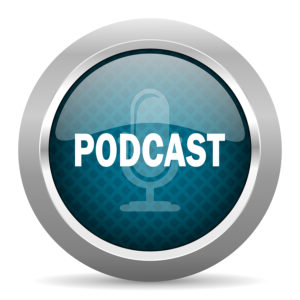Podcasts began as an outgrowth of the Apple iPod in 2004, as a tool to bring original programming to the once popular MP3 device. Despite early enthusiasm, podcasts faded in popularity because it was cumbersome to access the shows. The rise in smartphones and Bluetooth-enabled cars have made it easy for listeners to access shows and greatly expanded the audience. Last year Apple reported that subscriptions of podcasts through iTunes had reached 1 billion. The analytics company RawVoice, which tracks 20,000 shows, said the number of unique monthly podcast listeners has tripled to 75 million from 25 million five years ago.
Despite a constantly changing audio landscape, broadcast radio delivers more than half of the of the 4 hours and 5 minutes a day that consumers spend on all audio sources. But the audio space is vibrant and changing. Podcasts are one of alternate sources of audio with growing audiences. New research from Edison Research provides a snapshot of all audio consumption.
The above graph shows that nearly 2% of the total time spent listening to audio was devoted to podcast listening. On the surface this figure appears small. It is not small. As a “share” of audio, you can compare it to the share of a popular TV show and see that there is significant consumption. Edison Research took the research a step further and removed persons who don’t listen to podcasts. The below graph shows that podcast listeners devote a considerable amount of their daily audio time to podcasts.
Although a huge percentage of consumers still listen to broadcast radio each day, traditional radio broadcasters understand that in this age of everywhere media non-broadcast audio will continue to grow. They are starting to use podcasts to reach new, younger and more diverse audiences. Clear Channel, the largest radio broadcaster has noticed podcasts have the potential to chip away at traditional listening and has added podcasts to its iHeartRadio service. Podcasting is still a “small portion of overall listening, but we need to invest in it,” says Brian Lakamp, Clear Channel’s President of Digital. “We need to be wherever consumers are.”
Podcast enthusiasts believe preferences are beginning to change. “This is where radio syndication was 30 years ago, this is just the beginning,” said industry veteran Norm Pattiz, chief executive of podcast channel PodcastOne. “What Netflix did for video is what podcasts are doing for radio today.”
“Five years ago, podcasting was very much a hobbyist’s activity and many people weren’t making them to make money” said Tom Webster, vice president of strategy at Edison Research. “But audiences sizes have grown consistently and each listener is listening to more shows as part of their weekly habit. That’s brought major producers to embrace podcasting.” Examples of companies producing podcasts are:
- TWiT.tv – tech focused podcasts
- ESPN – Fantasy Focus Football
- NPR – Car Talk, Fresh Air, All Thinks Considered
- WNYC – Radiolab, Freakonomics Radio
- PodcastOne – Entertainment/Sports focused podcasts
The world of podcasts is changing quickly. There are more podcasters, listeners and more services and apps with which to consume your favorite podcasts. While it will never deliver Facebook numbers there is a decent size audience. Don’t ignore this medium during your planning process. And, as always, just make sure it complements and integrates with your overall marketing mix and analytics approach.
Fun fact: Adam Curry the former MTV VJ was nicknamed the “podfather” for his contributions to developing the medium.
Alan May
Just Media, Inc.


